Senior Capstone Projects (2022-2023)
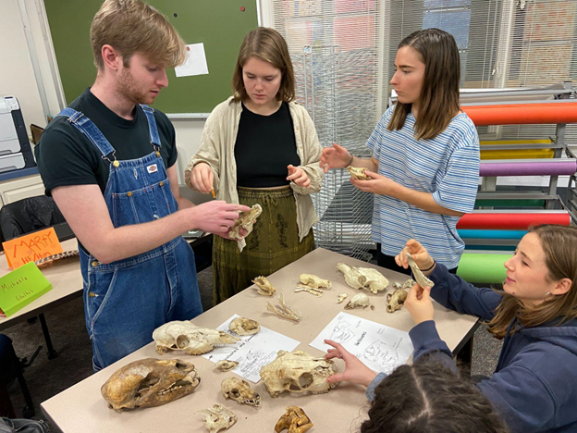
Decolonizing Pre-Service Teaching through Traditional Ecological Knowledge
Sophie Bean, Luna Peralta, Abby Thompson
This is a case study research investigated the impact of incorporating Traditional Ecological Knowledge (TEK) into a pre-service teaching course taught in Skidmore College. TEK is the passing of indigenous knowledge about the environment through oral traditions (Tsuji et al., 2002). Through a 1-credit bearing course, 18 Skidmore students were taught the meaning of TEK along with useful pedagogies that allowed them to create their own NYS standard approved TEK lesson plan for their chosen grade level.
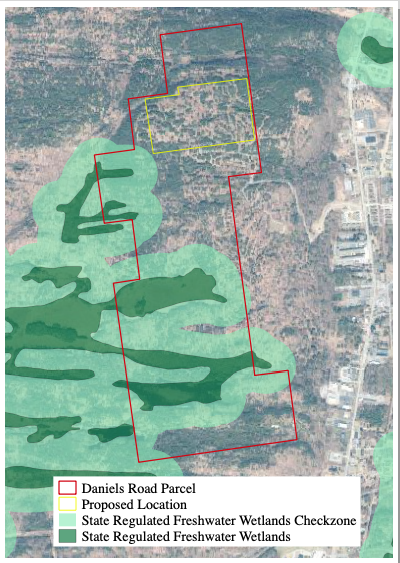
Why Not Wind? A Feasibility Study of Wind Energy at Skidmore College
Dylan Catian & Tess Vermylen
Skidmore College identified Daniels Road land parcel for renewable energy expansion. Two build scenarios of 4MW turbine vs four 1MW turbines, with a potential of generating 31% of Skidmore's electricity demand were analyzed. Three ownership models were studied, and PPA was found to be the most cost-effective option. Solar and other renewables should also be explored for future land use, as Skidmore-owned scenarios are not feasible.
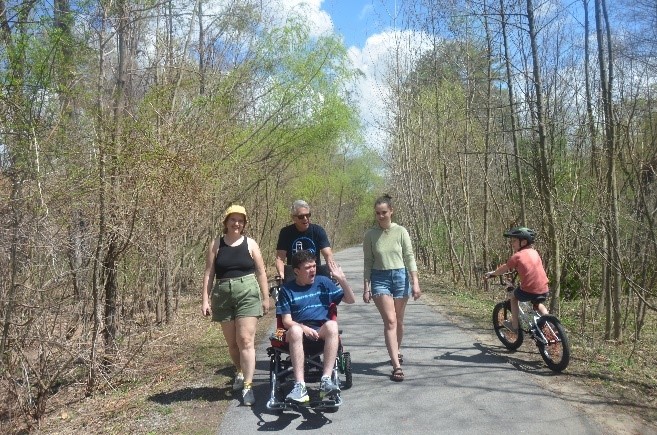
Julian Kobor, Stella Piasecki, and Kate Stacks
The purpose of this research was to investigate the common barriers to accessibility within nature and work to combat them through the creation of an accessible nature trail in Skidmore College’s North Woods. Through this research, it became clear that the construction of an accessible nature trail in Skidmore’s North Woods is feasible with a few trail alterations along the preexisting walking trail.
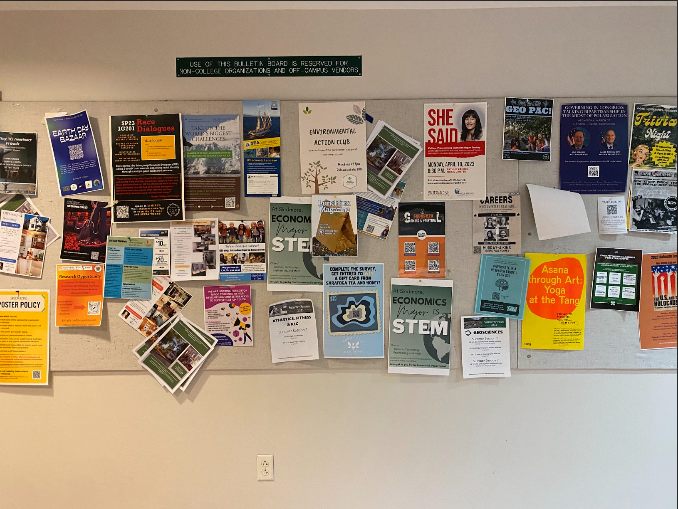
Bella Klosterman, Forrest Levey, Jessica Shulman, Lena Bruursema
Our year-long research investigated Skidmore College’s sustainability engagement efforts as an institution through surveys, focus groups, and semi-structured interviews with Peer and Aspirant Colleges, to understand the scope of Skidmore’s impact. We conducted a Qualtrics online survey with the student body at Skidmore College as well as student focus groups and semi-standardized interviews. Skidmore’s culture would benefit through bridging the communication gap between the institution and the student body and increasing campus-wide sustainability education and engagement efforts.
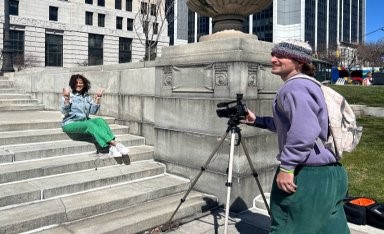
MAKING GOOD TROUBLE: An Analysis of the Environmental Justice Movement Within the Capital Region
Max Baskins, Nakeysa Hooglund, Ally Palmisciano & Luke Weber
This research provides a timeline of the Environmental Justice Movement within the Capital Region of New York via a participatory documentary approach. Semi-structured interviews andparticipant observation were used to gather data from a variety of stakeholders. Datatriangulation was employed to create the storyline of our film and final results, “Make GoodTrouble.” Stakeholders strongly emphasized the intersectionality of environmental justice and the need for youth

Order Up! An Analysis of Green Practices in Saratoga County Restaurants
Mia Berardino, Paige Karl, Angelica Pantginis, Finn Weber
The restaurant industry has significant impacts on the environment. If Saratoga has one of the highest number of restaurants per capita in the country, what does this mean about the impact of restaurants in Saratoga County? Through qualitative and quantitative research, our team set out to understand if these impacts were being addressed. We aimed to understand the current green practices and barriers facing of restaurants in Saratoga County.
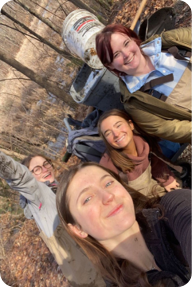
Faehndrich, C.S., Flahaven, A.F., La Forte, J.B., Lienert, K.M., Weber, K.N., Wilhelm, J.J.
Shoreline erosion is a major issue in freshwater lakes in Upstate New York, and it will only continue to worsen with climate change and population growth. Unfortunately, the sand that is used to restore these shorelines is a scarce finite resource. To address this issue, our research worked to better understand the feasibility and safety of using recycled glass sand, or glass cullet, as a sustainable sand substitute in freshwater ecosystems. We discovered that restoration specialists are interested in using glass sand in their projects if it is deemed safe, and that going through regulatory agencies will be a time consuming process if recycled glass sand is deemed ecologically safe. We also found that the volume of available glass material and transportation costs would be the biggest barriers for implementation in restoration projects.
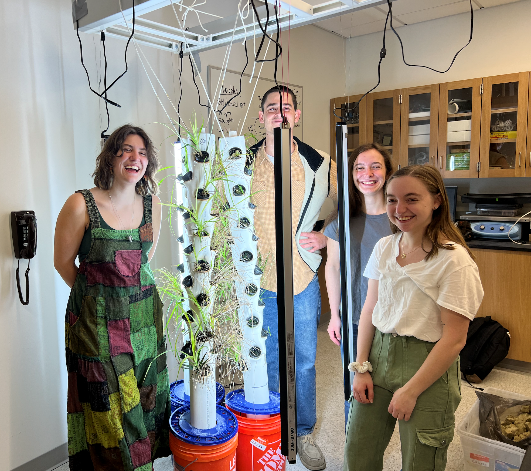
Emily Davis, Liam Gislason, Antoinette Miller, Emme Tissue
Wetlands are important due to the ecosystem services they provide but 50% of them have been lost globally, making wetland restoration crucial. However, wetland plant species are difficult to acquire, thus we decided to develop an alternative to current production methods: vertical hydroponic towers. We found that growing Buttonbush in a laboratory with a medium nutrient solution is an environmentally and financially viable solution in comparison to a greenhouse.
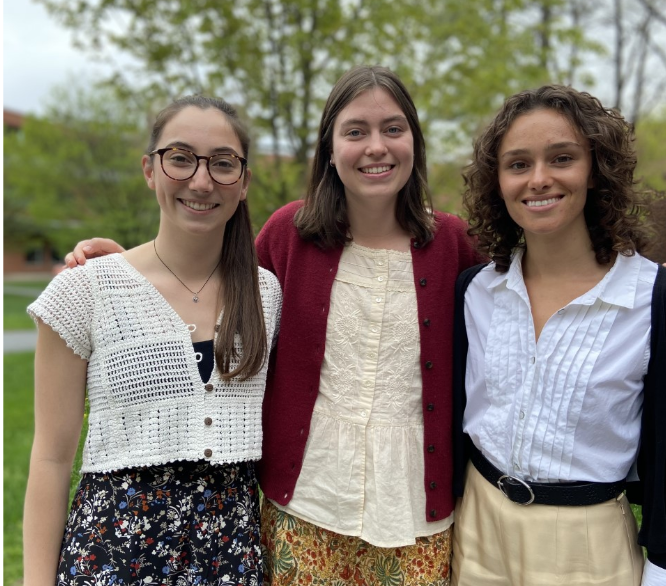
Flower Power: The Potential of Agrivoltaics in Upstate New York
Abbi Brown, Olivia Hunt & Rachel Olson
Agrivoltaics is a concept that addresses land-use concerns by combining solar power and agriculture. We examined the potential of agrivoltaics in Wilton, NY by growing lettuce, milkweed, and wildflowers under solar panel conditions with and without the addition of compost. Our results suggest that agrivoltaics can be successful in Wilton, NY and that the addition of compost to the soil facilitates ideal growth.